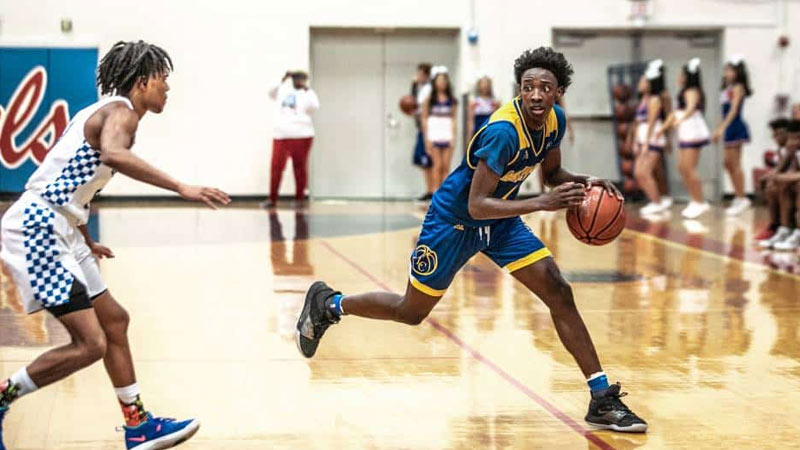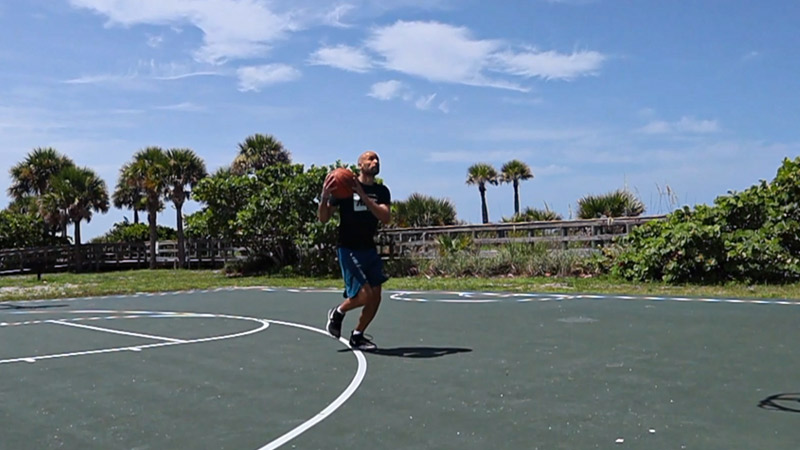One of the most controversial rules in basketball is the traveling rule. The Basketball Travelling Rule has raised some discussion among basketball experts.
Some argue that this rule needs more clarification and consistency across different levels of the play; while many believe the current basketball traveling rules should be enforced all along.
But what exactly are Basketball Traveling Rules? Let’s dive into the details today.
Our article will explore what traveling rules are in basketball and how it impacts the players including other personnel related to the sport itself.
What Is Traveling in Basketball?
It is not what you are thinking. Players are not traveling intertown to play basketball. Traveling in Basketball is a violation of regular laws; when a player makes too many steps at once without dribbling the ball.
In detail, when an offensive player who has the ball makes an additional step with their settled pivot foot, they travel.
Traveling can happen when a player gets the ball; while in a move or a standstill or simply when he starts to dribble. The player’s chosen pivot foot must not be raised until the ball is not in his possession anymore.
He can at most, turn his pivot foot side by side for getting solid angles with more opportunity.
Generally, the regular rule states that a player can have two steps without dribbling. But when it becomes three or more steps, we call it travel.
Traveling is not allowed in basketball and often results in a turnover. It may sound like a simple trick but in reality, it is not as simple as it may sound.
Don’t worry! We are here to describe all the possible cases today.
Basketball Traveling Rules

Source: coachingkidz.com
Traveling in Basketball is mostly related to the pivot foot of the player. Once you lock your pivot foot, it is not allowed to move before releasing the ball.
And, you can unlock the pivot foot and release the ball too. But has to ensure the ball leaves your hand before your pivot foot returns to the floor again.
The other foot, however, can move in any direction and at any time as long as the pivot foot remains in place. It will be traveling once you lift the pivot foot.
Key factors from Basketball Traveling Rules are:
1) A player can move his pivot foot while passing or shooting but he must release the ball before his pivot foot reaches the ground again.
For instance, a player can move his pivot foot while dribbling. Not to mention that the ball must be released before his pivot foot makes a second move.
2) When the player receives the ball while in the air during a jump shot and his both feet touch the surface at the same time, he can use any of his feet as the pivot foot.
He can also go by the first touch rule; meaning any of the feet that hit the ground first will be the pivot foot.
3) When a player receives the ball (a pass mid-strike) while in a run, he should initiate a jump stop with the ball. Once they stop, they can either use one foot as the pivot or dribble.
A player can establish a pivot foot after the jump shot. But if he used an additional step to collect the ball before the jump shot, he won’t be able to use his pivot foot.
This is because a jump stop also counts as a step in basketball.
Here Are Some Examples of Basketball Traveling
Traveling violations don’t happen for three or four steps only. There are some other ways too. You must be aware of them to prevent them in the field or, simply to figure them out before anybody else!
It includes:
1) In case of an up and down (jump in the air), a player must pass or shoot the ball before his both feet touch the ground.
2) A player who has the basketball on the floor can not roll over with the ball. Otherwise, it will be considered a travel violation.
3) A player can not pass the ball to himself while in possession of the ball, be it intentional or accidental. This will be a serious travel violation.
4) Without a foul being committed, even if a player falls to the ground, his pivot foot will be lifted up; leaving the ground. Thus, it will also be a travel violation.
5) The Pivot Foot must stay on the same spot while dribbling. No player can slide or drag his pivot foot.
6) Without a dribble, a player can not get up with the ball; especially when he has possession of the ball while on the floor.
Is Traveling Illegal in Basketball?
What do you think?
Traveling, of course, is illegal in basketball.
It is a fundamental rule of Basketball and should be implemented at all levels, from youth leagues to professional competitions.
When a player receives the ball, he has to establish his pivot foot and can only move that foot or lift it for a legal pivot.
Having more than two steps without dribbling the ball or moving the pivot foot improperly leads to travel and results in a turnover. Then, the opposing team will begin to possess the ball.
Rules set for traveling in basketball get the defensive team a fair chance to score.
Consider it this way,
If the offensive team race without dribbling, and have unlimited steps by moving their pivot foot anytime they wish, the defensive team merely gets a chance to shoot with no opportunity to stop the ball.
Thus, Basketball Traveling Rules have been set to minimize the unfair advantage the offensives may receive.
So, What’s the Penalty for Traveling?
In terms of basketball, traveling results in a dead ball turnover. You know what a turnover is, right? It is when a basketball team loses possession of the ball to the opposing team.
For traveling, the turnover is considered on the offensive side; meaning, the offensive will end up losing the ball to their opponent.
For NBA, the offensive team loses possession of the ball to the defense. The ball gets in the inbound position between the free throw line and the baseline.
However, for college teams and below, the defense shall receive the ball and have to throw the ball near the spot where a traveling violation occurred. They can either score from the sideline or the baseline.
Any Last Words?
So, here we are at the end of our article. The traveling rule is very peculiar and most of us might not still be familiar with it.
But, that is why we are here with our guide articles. What do you think? Is Basketball Traveling Rules really good enough for the overall improvement of the sport?
Or, do you think it shouldn’t be enforced and the offensive team should have their benefit? Let us know what you think in the comment section.
Also, help your fellow basketball hub to develop a solid knowledge of basketball, by sharing our article.
Stay in touch with us, we will come back with more basketball tips regularly.







